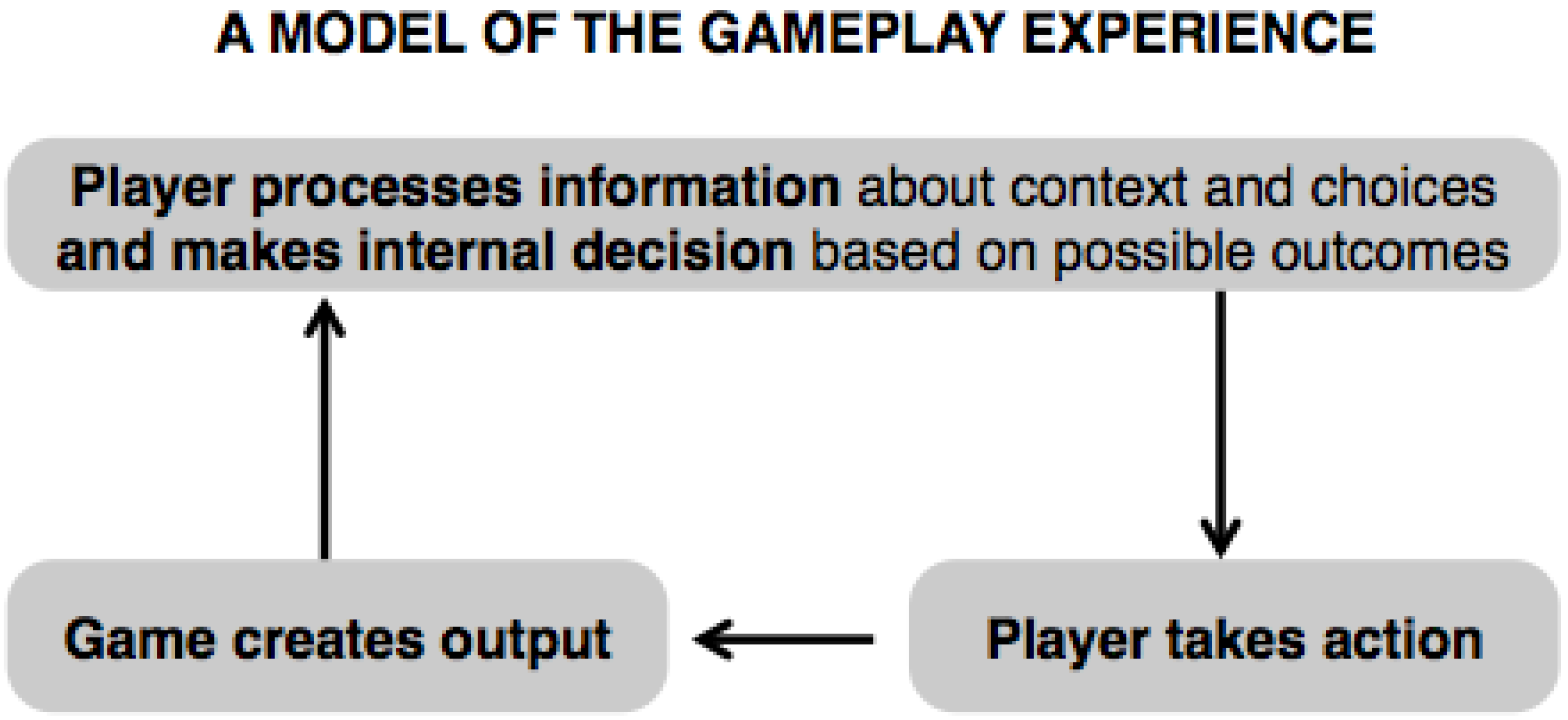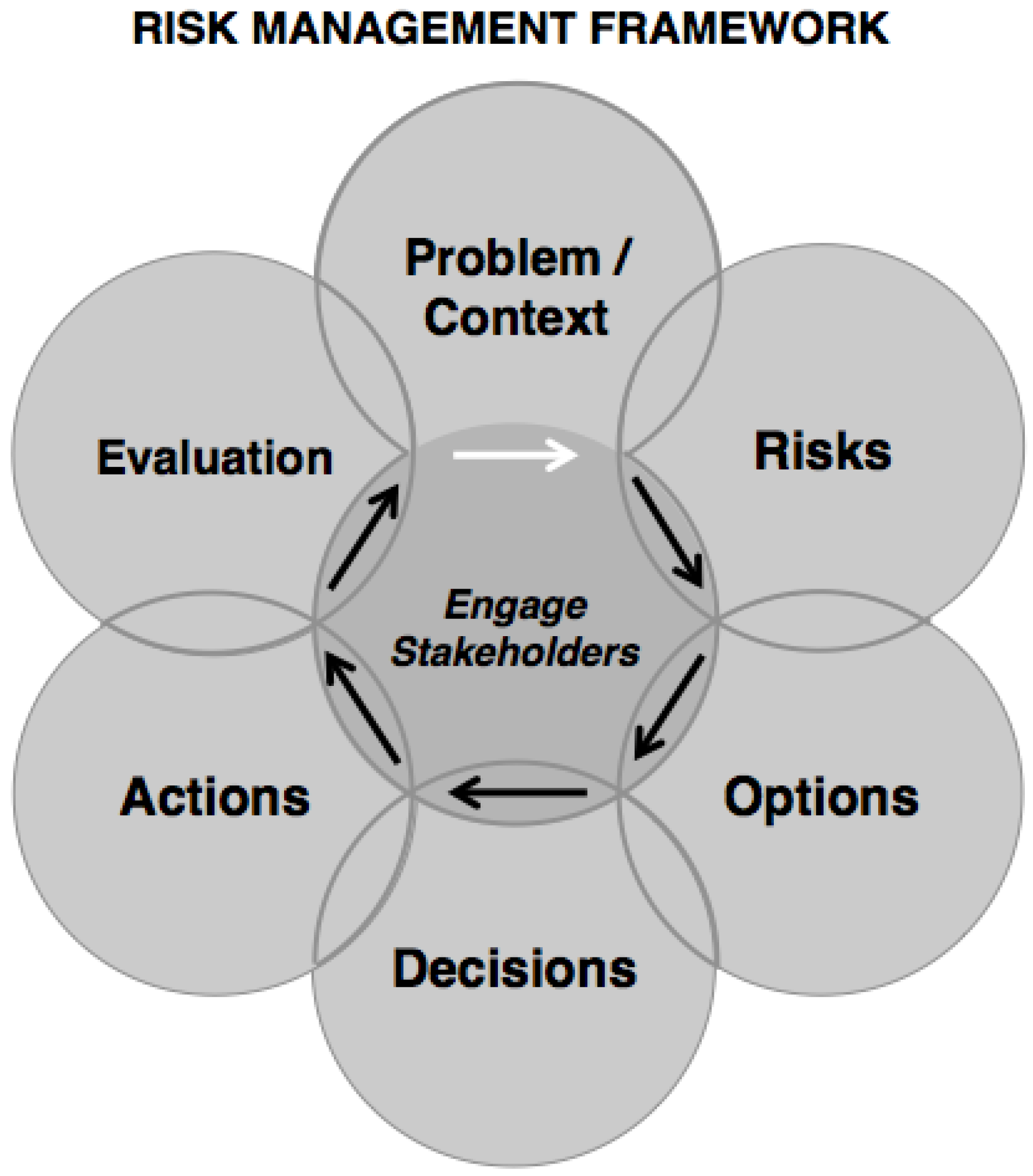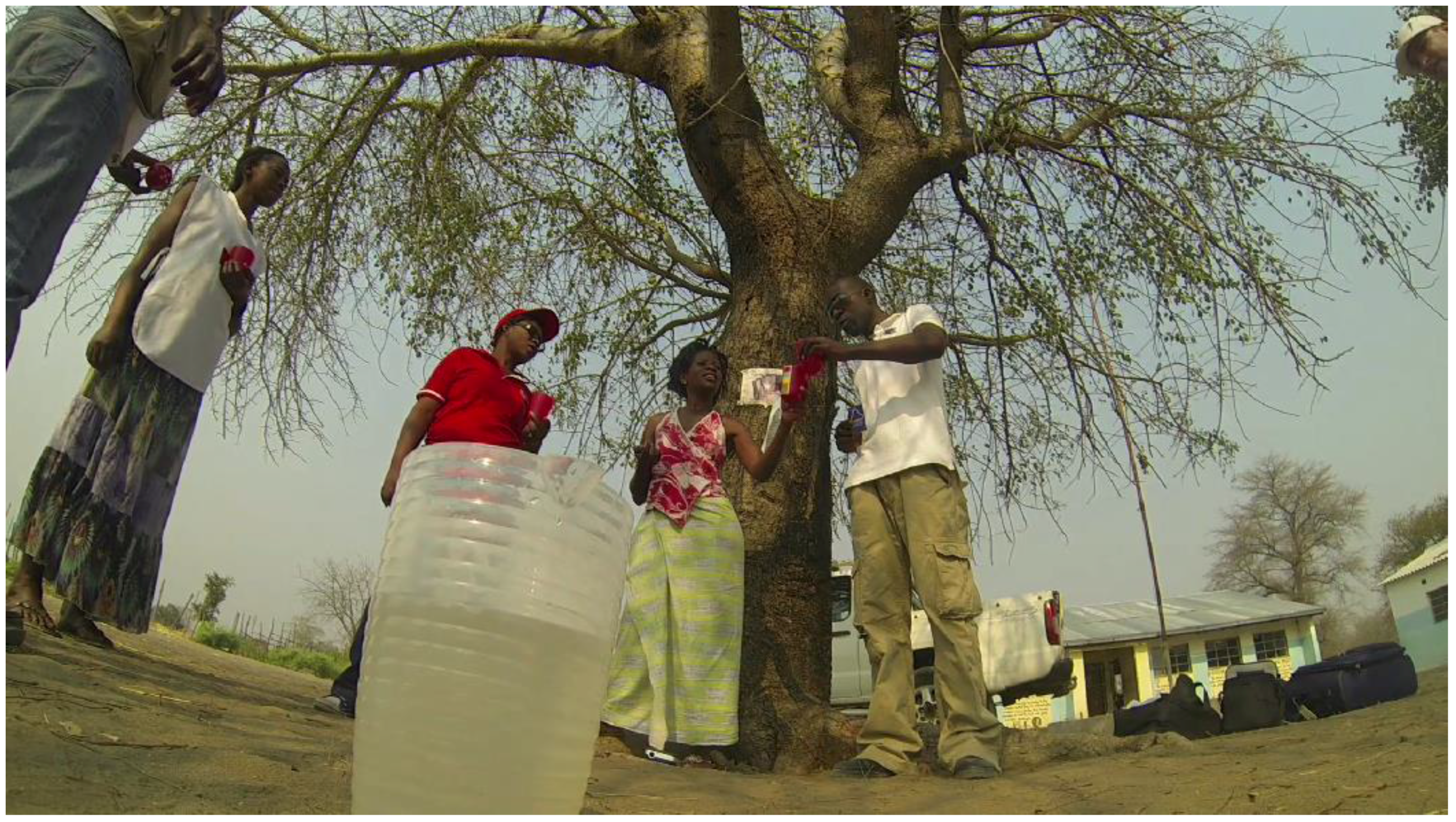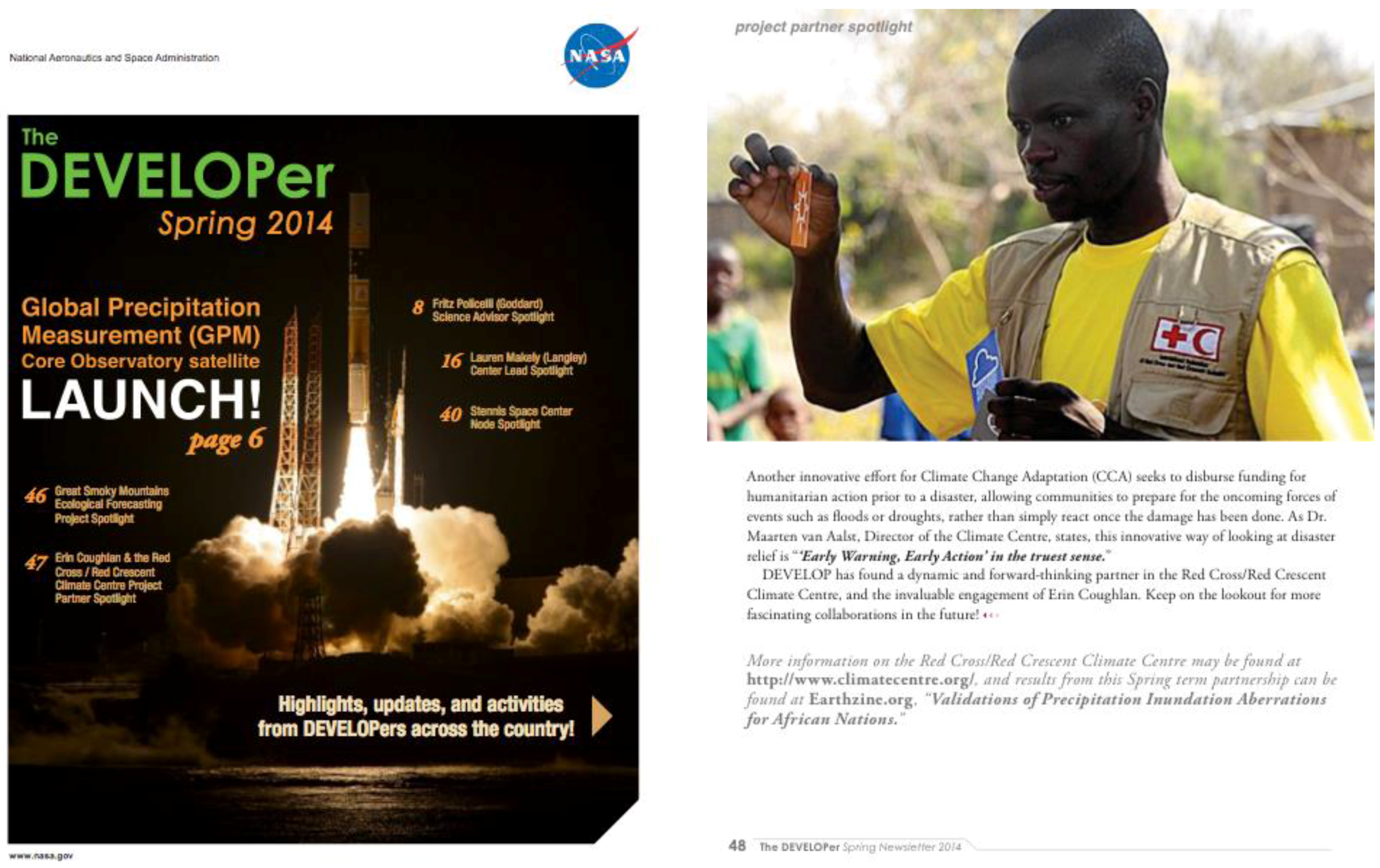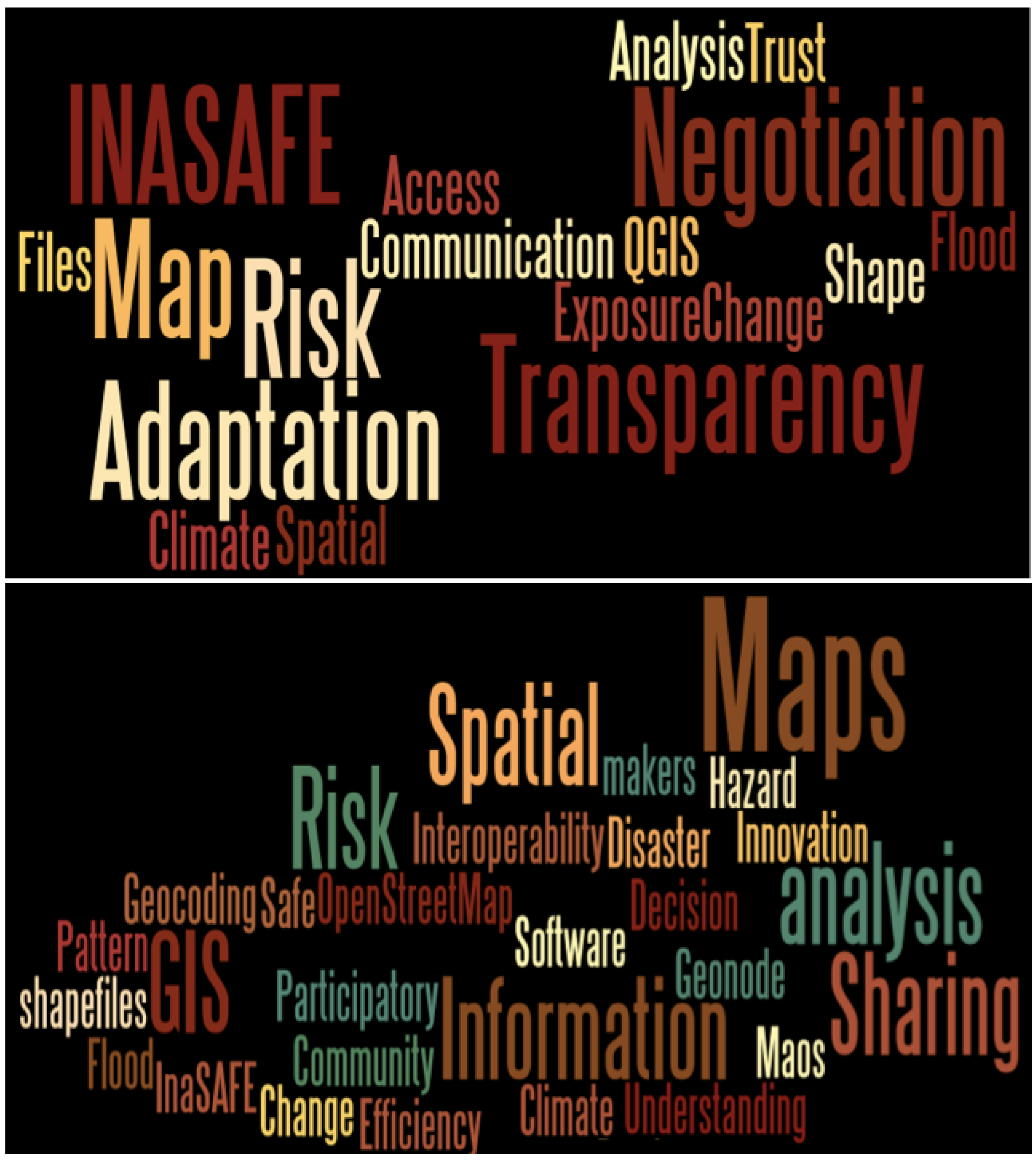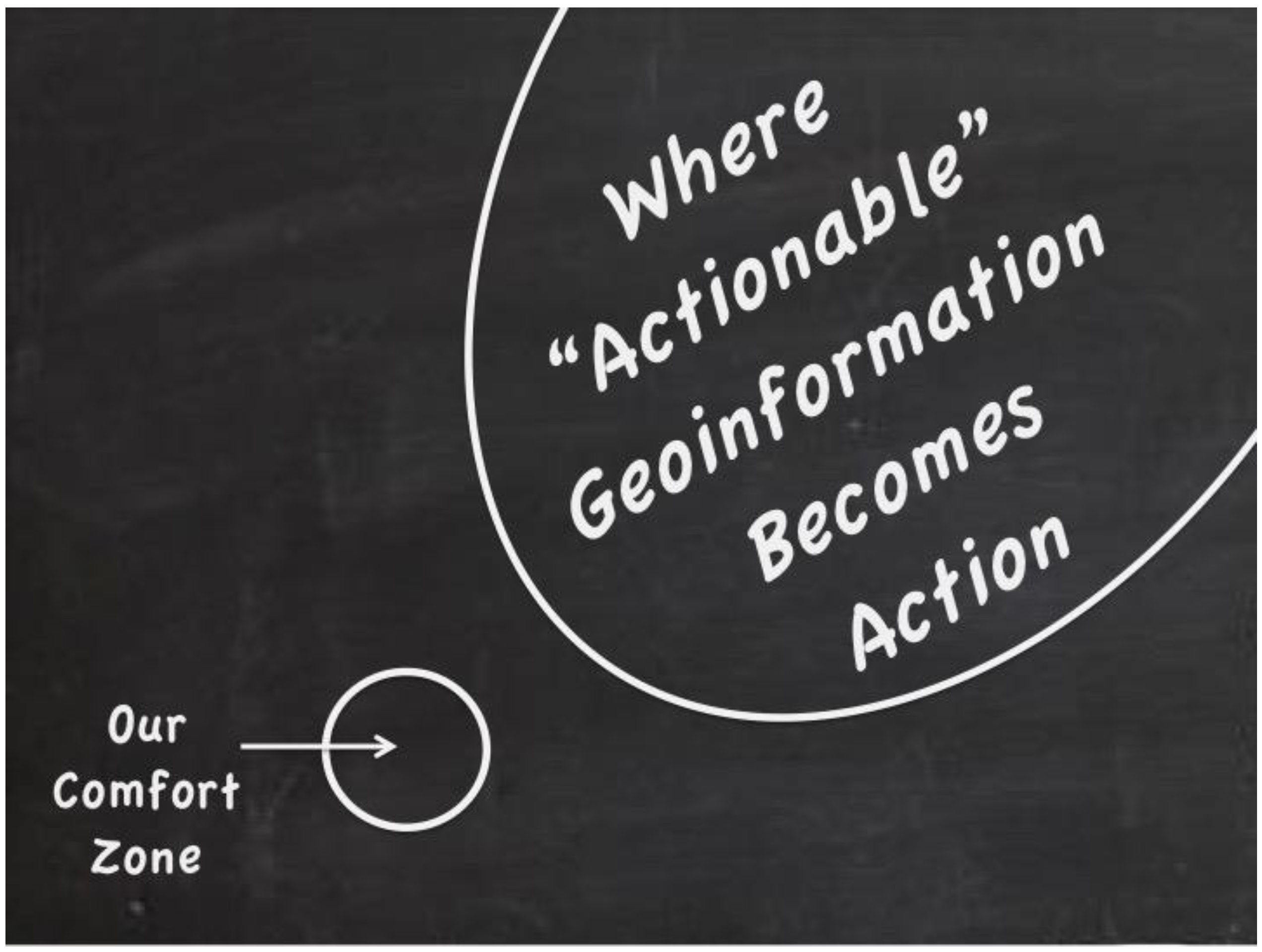3.1. UpRiver: A New Approach to Community-Based Flood Warning Systems
The literature points to the relevance of predictable problems involving how forecasts are formulated, communicated, understood, trusted, and used—or not [
19]. With a few notable exceptions such as the Famine Early Warning System Network (FEWS NET), humanitarian organizations remain largely dissociated from the scientific institutions and forecasting tools that can help understand the options for managing climate-related threats. In the context of a research project on humanitarian policy and practice in a changing climate, the Red Cross Red Crescent Climate Centre partnered and the Zambia Red Cross Society joined forces to address this issue, specifically for flood risk management along the Zambezi River Basin.
Two main challenges had to be addressed. On one hand, subsistence farmers living in communities on the Zambezi floodplain lack a full understanding of the mechanisms that cause flooding (
i.e., extreme rainfall upstream predictably traveling down the river): many of them do not benefit from the predictability of riverine inundations, and experience the rising waters as if they simply materialized in their village as the result of divine punishment or bad luck. Such lack of awareness, combined with diverse intra-community patterns of vulnerability to flooding [
20], creates important challenges for humanitarian initiatives aimed at linking early warning with early action to avoid flood losses. On the other hand, insufficient geoinformation about river levels over time make it very difficult to develop and calibrate predictive models of flooding in the Zambezi and other river basins where extremely vulnerable communities depend on humanitarian organizations for disaster preparedness and response.
In order to accelerate and improve risk management decisions, the Climate Centre and partners have developed the concept of “forecast-based financing for disaster preparedness” (FbF): an approach for catalyzing humanitarian action based on extreme weather and climate forecasts [
21]. In essence, disaster risk management efforts traditionally focus on either long-term preventative measures or post-disaster response. Outside of these, there are many short-term actions, such as evacuation, that can be implemented to reduce the risk of impacts during the precious window of opportunity before a flood happens but after science says that extreme rainfall or river levels associated with flood losses have been observed upstream, or are likely to happen. However, this opportunity to anticipate extreme events is regularly overlooked, leading to avoidable losses or unnecessarily expensive measures that are triggered too late. FbF is a novel forecast-based financing system to automatically trigger action based on forecasts or observations. The system matches threshold forecast attributes with appropriate actions, disburses required funding when threshold forecasts are issued, and develops standard operating procedures that contain the mandate to act when these threshold forecasts are issued. Such a system can be scaled up in flood-prone areas worldwide if adequate forecasting tools are made available—which is, for now, rarely the case in river basins with extremely vulnerable populations.
This case study shares an innovative approach to support forecast-based financing for disaster preparedness through the game
UpRiver, an activity that uses game mechanics to bring play and serious real-world processes together, so that real action occurs while playing—what Gordon
et al. [
22] describe as “engagement games”—resulting in better action, more trust, and civic learning. UpRiver has two versions, a physical game, and a digital game.
3.1.1. Analog UpRiver: Improving Understanding of Flood Predictability at Community Level
The core idea of the physical, analog version of UpRiver is to mimic the dynamics shaping floods and the success or failure of disaster preparedness in a river basin. The game was played with subsistence farmers who live and farm along the Zambezi River floodplain in western Zambia—the very same stakeholders who would benefit from understanding and acting upon flood warnings. Players receive a limited budget in the form of beans, and form a line that represents communities along the river floodplain separated tens or hundreds of kilometers (see
Figure 4). Each player holds a cup with markers indicating river level in her community, and experiences changes in river level through time (captured in a sequence of rounds) through two mechanisms:
- -
Rainfall: water is added to each cup based on a roll of the dice representing precipitation: if a 6 is rolled, a large sponge is dipped in a jug and then used to “rain” a lot of water on the cup; if a 1 is rolled only a small sponge is used, and a medium sponge is used for intermediate values of rainfall.
- -
River flow: players pass water from their cup to their neighbors’ cups downstream, representing river discharge following the force of gravity.
If the combination of river flow and rainfall causes a player’s cup to overflow, such an event represents a flood disaster: all her beans are lost—unless the player invests in flood preparedness (which costs a few beans, which of course would be wasted if preparedness measures are taken and then no flood materializes). Players can use their beans to purchase data about river level upstream and estimate the chances of flooding on any given turn—thus informing whether preparedness measures are worth deploying.
Figure 4.
Zambian subsistence farmers play the UpRiver game in the village of Kazungula to learn about the predictability of changing water levels on the Zambezi river. The game helps players understand the value of self-organization for flood warnings and disaster preparedness.
Figure 4.
Zambian subsistence farmers play the UpRiver game in the village of Kazungula to learn about the predictability of changing water levels on the Zambezi river. The game helps players understand the value of self-organization for flood warnings and disaster preparedness.
Game sessions in Kazungula and Sesheke in western Zambia proved extremely successful: participants were intensely engaged both in the game and in the flood risk management planning session that followed. The system dynamics involving floods, early warnings, and people’s behaviors were sufficiently captured in gameplay and discussed during debriefing and planning. The combination of collaboration and competition offered by UpRiver created an atmosphere of laughter, anticipation, and bonding that substantially increased their appetite for asking questions about flood predictability and disaster preparedness measures. Players reported understanding the need and value of flood warnings like never before, and were eager to turn the simulated experience into real-world action [
22]. Importantly, the game helped create bonding between farmers at risk and Zambian Red Cross staff and volunteers. The benefits of gameplay transcend the learning objective and result in better relationships between those with problems and those who can help organize solutions.
3.1.2. Digital UpRiver: Community Led Data Collection to Improve Flood Predictions, and Trust
The digital version of UpRiver builds on the narrative of the physical version, but with an important innovative twist: the prototype digital game is scaffolded onto the real world, allowing for what Haklay [
23] calls “participatory sensing”. Instead of cups depicting fictional river levels, players observe real water levels through existing limnimeters along the river, and report those river levels via text message to a specially designed web-enabled platform. Additionally, players submit their “forecast river level” (a guess) with a certain lead time—for example 48 h. Among the various players in any given community, whoever submits the water level value that is closest to the observed value wins ten points. Through the digital game system, participants can use their points to acquire information about river levels upstream in order to try to improve their guesses. In this way, players are invited to develop an understanding of the dynamic nature of water levels in the river basin.
The game is played throughout the time period where floods are likely. At the end of the rainy season, the player who earned most points within each community turns those points into a prize, i.e., something of real value (such as cash, a Red Cross t-shirt, or mobile phone credit). This gives people incentives to read limnimeters and engage in collecting and submitting geoinformation that will help researchers to calibrate hydrological models and thus produce better flood forecasts.
Eventually when a good-enough hydrological model is calibrated with the support of the crowdsourced river data, the game facilitation team will add the predictive model as a player (possibly called “Mike”, the name of a well-known tool for flood forecasting). Participants who submit their forecast before the deadline will receive a text message one minute after the deadline, indicating what Mike’s prediction was. Players that perform better than the model also earn a point. This incentive will help participants notice that the model tends to be make good guesses when river levels are unusually high: after several rounds noticing the forecast skill, if Mike predicts the river level to be about 3 m above their home’s kitchen floor, they are more likely to start running to higher ground with their valuables. Eventually the trust earned through gameplay should help the Red Cross help communities take the early warning seriously.
Figure 5.
The game UpRiver, facilitated by a Red Cross volunteer from the village of Kazungula in western Zambia, was featured in a NASA publication to highlight the value of flood prediction. Engagement games can help raise awareness and visibility of initiatives involving geoinformation.
Figure 5.
The game UpRiver, facilitated by a Red Cross volunteer from the village of Kazungula in western Zambia, was featured in a NASA publication to highlight the value of flood prediction. Engagement games can help raise awareness and visibility of initiatives involving geoinformation.
A NASA [
24] publication recently featured a rocket launch in the cover. As shown in
Figure 5, page 47 shows a photo of a Red Cross volunteer called Moono Mutambwa playing the UpRiver game with subsistence farmers in the floodplains of the Zambezi river. One can wonder: what are the chances of a Zambian Red Cross facilitator from the village of Kazungula appearing in a NASA publication? This serious yet fun game continues to help local, national, and global humanitarian efforts to rethink the role of science to prevent disasters: we aim to work with others to make climate related forecasts focus on extreme “threshold” events, to characterize of the full range of variability over time; to pay attention to implications of model uncertainties; and to produce a clear, jargon-free and succinct outline of insights to support decision making [
25].
The idea of crowdsourcing geoinformation for flood risk management embedded in UpRiver is now being integrated into a project implemented by the Togo Red Cross in the Mono River Basin downstream of the Nangbeto Dam, in West Africa. Funded by the German Federal Ministry for Economic Cooperation and Development through the German Red Cross, and with technical assistance from the Climate Centre, this project engages the Togolese Open Street Map community to develop software tools for acquiring, processing and sharing geoinformation in real time—such as geolocated data on river levels, which will help predict floods and trigger disbursement of funds for targeted early action, including community-level early warnings as well as prepositioning of items to manage or reduce flood impacts.
As reported in a research roadmap for human computation [
26], this endeavor can at a later stage support “citizen cyberscience”: online participation in scientific research by members of the public [
27], for example by creating a shared approach to flood prediction modeling, offering some people and teams with expertise the challenge to design the conceptual architecture for physical or statistical representations of the interactions between hazard and vulnerability, while laypeople take on simpler but valuable tasks like volunteer computing.
3.2. Open Data for Resilience: Interactive Learning about Digital Tools and Institutional Frameworks
The Global Facility for Disaster Reduction and Recovery (GFDRR) is a global partnership managed by the World Bank. Working with over 400 local, national, regional, and international partners, GFDRR provides grants and technical assistance, and serves as a global platform for knowledge-sharing and capacity building for disaster and climate resilience. In March 2014 it launched the Open Data for Resilience Initiative (OpenDRI) Field Guide [
28], a practical manual aimed at setting foundational standards for the open source creation and communication of geoinformation. Its contents include basics of why disaster management can be improved though open data, as well as specific software tools such as Open Street Map for data acquisition, GeoNode for developing geospatial information systems, and InaSAFE for impact assessment.
While conventional training sessions could have helped disseminate the diverse, rich contents of the OpenDRI Field Guide, the GFDRR team decided to innovate and embed the training into a playful, experiential learning setup: participants were to be immersed in a simulated situation that required them to take on roles representing real life stakeholders. Responding to a set of defined rules and acting on the information given to them as they would in the real world, trainees would need to try the ideas and tools presented as part of a half-day training to guide decision-making and their responses to the disaster risk management scenarios and options presented to them, slowly built elements and relationships that capture the complex system dynamics of how and why open data is used or misused, in a way that was both serious and fun. The remainder of this section describes in chronological order of gameplay the sequence of components of the game-enabled learning experience, originally designed for an afternoon training session held with about 30 participants from around the world at the “Understanding Risk” conference.
3.2.1. Introduction and Forming Sub-Groups
After an overview of the objectives and participatory approach of the training session, players received unique “Identity Card” badges, thus assigning them three kinds of attributes: Region (“North”, “West” or “South”), Sector (“Edu” for Ministry of Education, “Gov” for Ministry of Government Planning, or “Org” for Civil Society Organization), and Color (“Blue”, “Yellow” or “Green”), to be used later for the formation of teams collaborating and competing to manage flood risk. These fictional identities were associated with roles and responsibilities in the city of La Plata, Argentina, chosen for this activity because of its easy-to-navigate street pattern (rectangular grid with numbered streets) and good availability of flood-related data. In order to help participants get a sense of who they are both in the real world and in the fiction of the game, the usual approach could have been used—i.e., each person stating name and affiliation (which is very time consuming and sets a boring atmosphere). Instead, the activity “answer with your feet” was used, whereby the facilitator asks people to walk to different parts of the room depending first on their real attributes (gender, familiarity with GIS, etc.) and then with their fictional attributes assigned through the ID cards (region, color, sector). This physical activity allows participants to visualize the diversity in the room and sets the tone for the rest of the session.
3.2.2. Snap!: A Warmup Activity to Elicit Participants’ Ideas on Open Data
“Snap!” is based on a British card game, adapted for serious learning with three aims:
Energize participants: activate people’s brainpower (crucial for sessions after lunch)
Create a sense of shared identity among participants of the same sector (Edu, Gov, Org)
Learn from participants about what concepts they associate with Open Data
In the “Snap!” game session, players first paired up with someone else from the same sector, then went through cycles where they have to quickly come up with a set of concepts (forming in their minds a deck of imaginary word cards), then state those words in sequence at the same time as their partner (as if they were simultaneously flipping the imaginary word cards and stating the word contained in each), trying to react faster than the partner if a certain type of circumstance emerges: when both players say the same word at the same time, the first player to say “Snap!” gets all the imaginary cards and earns an imaginary point. The first cycle is easy and intensely fun, and promotes bonding through shared laughter and surprise. Then complexity grows until in the third cycle players must come up with word cards related to the topic of the session (i.e., “Open Data for Resilience”). They tend to confront a “clogging” of ideas that builds their appetite for crystallizing and discussing concepts ranging from “map” to “software interoperability”.
An additional, short group activity elicits those concepts in actual word cards (blank papers), allowing the facilitation team to create word clouds that illustrate and show their current state of understanding of the issue. The same activity can be deployed in less than 5 min at the end of the session, for a quick and fun way to assess whether the participants’ understanding of the Open Data issue has evolved in any way as a result of the afternoon activities (see
Figure 6).
Figure 6.
Examples of wordcoulds emerging from the game “Snap!”, illustrating concepts that players associated with Open Data for Resilience after and before the participatory training session.
Figure 6.
Examples of wordcoulds emerging from the game “Snap!”, illustrating concepts that players associated with Open Data for Resilience after and before the participatory training session.
3.2.3. The Challenge: Flood Risks in the City of La Plata: Basics of Geography and Tasks
In this brief session, following the shared awareness of what people think of Open Data for Resilience’, participants are introduced to the case study of the city of La Plata, including its street layout and its changing flood risks. Players learn that the simulation game is a simplified representation of reality, including many unfortunate aspects of the real world that do matter, such as incomplete data, confusing instructions from bosses, and “glitches” in technology. Like in the real world, some changes in land use and some information in recently developed urban areas are not well captured in maps. The map printouts distributed to players are decidedly incomplete, depicting most but not all schools in La Plata.
Teams share budgets and decisions. Diversity within a team shapes gameplay incentives. Trios of players defined by sector can win “performance points”. The first task for players involves mapping the schools in La Plata, in order to support investment planning for decisions involving both computer equipment (a task for “Edu” players) and flood retrofitting (a task for “Gov” players). At the end of the day, the trios with most performance points will win prizes (one for “.Edu”, one for “.Gov”, one for “.Org”). The simulation compresses time, encompassing from 2005 to 2020. Players are told to expect tight deadlines, substantial time pressure, and surprises.
3.2.4. OSM: OpenStreetMap Data Acquisition by Sector
This is the first task involving the technical skills acquired during the morning session: Focus is on performing basic data entry and tracing of imagery. Participants begin in “Sector Trios” (each trio comprising the North + West + South regions of the same color and sector). Each Trio has access to a computer, receives some beans (which represent currency to be used later in the sequence of tasks) and is given a Memo: a document from their fictional superiors indicating their objectives, basics of imminent and future tasks, and a sense of their incentives and constraints. Each “Edu” and “Gov” Trio has 20 min to create a digital map of certain La Plata schools using Open Street Map (OSM). They receive a unique list with the IDs and precise addresses of a subset of schools (reliably provided by ministry colleagues), plus IDs and vaguely defined addresses of additional schools with insufficient information to geolocate them, unless “Org” players engage (“Org” players are the only ones who have access to the fictional space where schools can be visited and geolocated).
Players are welcome to interact, share information, trade beans (to fund Org players so they do collect data from the field), whatever helps them accomplish their task within the tight deadline. Gameplay, like data acquisition in the real world, usually reveals underlying tensions and problems regarding how individuals behave with other stakeholders within and beyond their team—an issue that explains a lot about obstacles to open data. For that reason, the next activity focuses on negotiated interactions.
3.2.5. “Negotiating Data”: An Energizer on the Challenges of Open Data
“Negotiating Data” is a fast-paced game that allows for the emergence of selfish and myopic behavior (one of the causes of insufficient progress in Open Data initiatives). Participants form separate clusters by sector (“Edu”, “Gov” and “Org”). Each cluster will hold different, indispensable assets that need to be combined to achieve results: “Gov” clusters receive a limited supply of post-it notes, “Edu” clusters receive two unsharpened wooden pencils, and “Org” clusters receive one pencil sharpener. The facilitator explains that each cluster has strictly 3 min to get as many “Data Catalogues” as possible loaded in their internal IT systems (represented by a large, labeled paper on the wall). In the fiction of the game, a “Complete Data Catalogue” is a post-it note stuck on the IT system, with the three-letter name of the cluster on it, written with a wooden pencil. When the countdown is complete, each cluster earns more or less beans depending on their performance.
By creating scarcity, interdependencies, and a deep sense of ownership of assets that each team thinks is the most valuable, this activity begins with a situation that is analogous to the current world of disaster-related data. In the words of the OpenDRI Field Guide [
28]:
“Before an OpenDRI engagement, decision makers and their datasets tend to be loosely connected (…) existing stocks of data which remain latent, inaccessible even to other ministries and municipalities because they are in forms that prevent them from flowing freely. Some are frozen on paper. Others are blocked by technologies that lock datasets into proprietary ecosystems, stoppered by policies that prevent release beyond small groups, or fragmented into bureaucratic silos that require significant investment to assemble back into a whole picture (…) Catalyzing and sustaining change is difficult. Without continuous funding, most development efforts falter, brain drain may pull key talent to other organizations, and stakeholders revert to the data sharing practices that they used prior to the OpenDRI engagement.”The narrative and mechanics of this activity mimic some of the perceived incentives and disincentives working against Open Data approaches for disaster management, triggering the emergence of emotions, and behaviors that lead to lack of collaboration. Importantly, even though the game rules create an aura of competition, the actual task for each cluster is simply and clearly stated as getting “as many as possible” (not in comparison to other teams, but in absolute terms). This playful activity provides rich, deep experiential learning about the individual and collective forces that can lead to absence of at least one of the five principles of Open Data (Technical openness, Legal Openness, Accessibility, Interoperability, and Reusability). A very short debriefing elicits key emotions and insights about how existing data sharing mechanisms foster or impair open data policies.
3.2.6. Resource Allocation Task
This task has two components: first a flood impact scenario, and then investments in schools. In the fiction of the game, there has been so far no data about past flood damage to schools. At this stage the facilitator indicates that all players will have access to a digital map with the output of a hydrological model of the 2002 flood event. There might have been changes since then due to urbanization, drainage infrastructure, etc. so that rainfall identical to the 2002 extreme event would cause different flood impacts in the near future. The tasks include setting up QGIS basic (create new project, load layers), downloading data from GeoNode (Flood 2002, school data), and running InaSAFE impact analysis to see which schools flooded in 2002. Players have to complete this impact analysis in 30 min.
If well executed, the resulting map provides actionable information for the three “Color” teams (of nine players per color, combining different sectors and regions). Each “Color” team has to allocate their beans to school improvements, with four choices for each school:
- -
Do nothing (no cost)
- -
Computer equipment purchased and installed (cost: 1 bean per school)
- -
Flood proofing, ensuring that no schoolchildren are at risk should a flood occur, and that future flood damages are minimized and easy to recover from (cost: 2 beans per school)
- -
Flood proofing and computer equipment for the same school: (cost: 4 beans)
By the firm deadline (less than 15 min from the end of the impact assessment), each color team needs to invest their beans in computer equipment and/or flood proofing for each school—using a special form (each school has a numeric value ranging from 1 to 8 which defines how many performance points can be earned for each school, creating a spatial heterogeneity that needs to be considered when players negotiate how to allocate resources). Flood risk needs to be considered: It would be wasteful to retrofit a school that will not get flooded, and giving computers to schools that will get flooded would lead to avoidable losses.
Importantly, the “Edu”, “Gov” and “Org” sectors have different incentives for shaping investment plans: “Edu performance points” are earned if a school is equipped with computers by the end of the year 2020 (note: if a school is damaged by floods, the computers are lost); whereas “Gov performance points” are earned if future flood damages to schools are avoided; and “Org” performance points are earned by minimizing the number of schoolchildren negatively affected by future floods. At the deadline, the Facilitator invites participants to find similarities and differences in the investment choices made by the various color teams.
3.2.7. Warning! Evacuate Schools? (InaSAFE Impact Assessment)
This task involves basic management of spatial data on schools and flood risk, given fictional forecast information about high probability of an imminent, unprecedented storm leading to very severe flooding in 6 to 12 h (“likely much worse than the 2002 floods”). To mimic real-world disaster management conditions, participants are given an extremely short time to download population data from GeoNode, and then use InaSAFE to run a flood impact analysis on schools and population to support some difficult decisions.
Players must announce which if any schools they will evacuate (a decision in the hands of “Gov” players), which schools they will turn into flood shelters (a decision in the hands of “Gov” players), and what quantities of food and water will be secured and stocked to manage flood-related needs (a decision in the hands of “Org” players). There are consequences to player’s decisions, including negative points for wasting resources if acting in vain, as well as for avoidable losses if failing to act.
When the deadline is reached for evacuation, shelter and relief items, participants are invited to reflect on the similarities and differences emerging from the investment patterns and the underlying decision making processes. Then a map is shown with the actual flood-affected areas during the severe flood of April 2013 in La Plata—an event that led to the loss of almost 100 lives and substantial damages to schools. This of course was caused by extremely intense rainfall… but most people would not have died if they had moved less than 2 m upwards, or less than 200 m away—or if schools had been properly retrofitted. The natural hazard would likely not have become a disaster if, before the rains, there had been a collective effort by various stakeholders to better understand flood risks, identify critically vulnerable areas, set up plans for early action based on early warning, and—importantly, taken advantage of the opportunities offered by Open Data to facilitate learning and dialogue. This activity consolidates many aspects of the training objectives, not only the technical content of software tools but also the principles of open data and interinstitutional collaboration.
3.2.8. Debriefing: What Have We Learned?
The final session distills insights from the half-day interactive experience, combining key lessons and ideas for implementing new tools and mindsets in the concrete work of participants as they return to their real-world tasks. This game-enabled approach to training disaster managers and other stakeholders on Open Data for Resilience has been deployed in very diverse settings, ranging from World Bank staff in Washington, DC to government and civil society officials responsible for flood risk management in Malawi, southern Africa. The facilitation team at GFDRR reports that the playful nature of the designed event has been very successful in motivating participants to stay engaged throughout the entire training session—as opposed to the rather dry and detached attitudes that often resulted from conventional workshops based on unidirectional training followed by clear but not playful tasks to deploy new skills. Importantly, both trainers and organizations asking for the training are more motivated to further reach out and disseminate the valuable OpenDRI toolkit and mindset.

